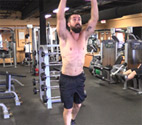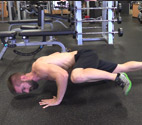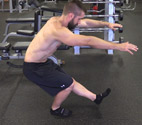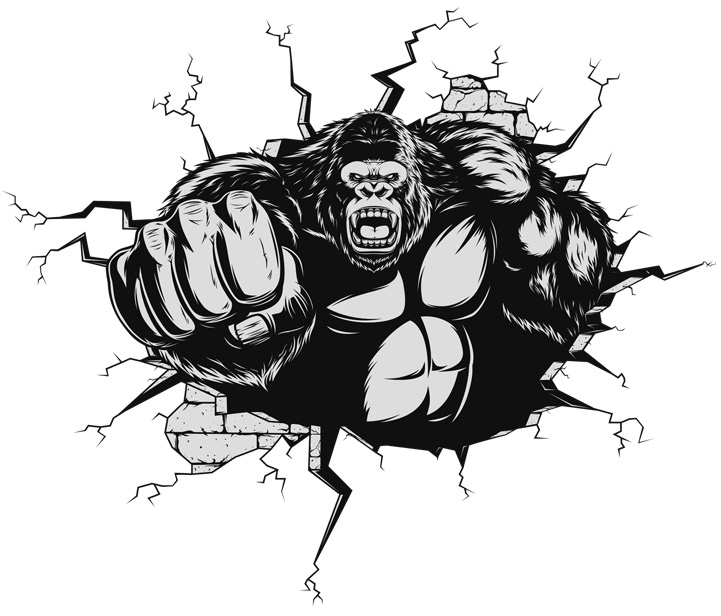What's your STRENGTH type?
Published: Tue, 10/17/17
1-Explosive Strength

Explosive strength is strength per unit of time. This type of time-specific force depends on the amount of force you can generate in the shortest amount of time. In terms of strength calculation, it means how fast your body can move from one point to another. This kind of strength is utilized in free styling in moves, where the body is suspended in air for few seconds like somersaults and more commonly plyometric pushups.
NOTE: This kind of strength IS used in Max Effort lifts….without the element of Explosive Strength, 1RM would not be possible but it can be used to generate enormous power w/ bodyweight movements as described above.
2-Strength Endurance

Strength endurance is the amount of force you can generate for an extended period of time. This is the ability to be as strong as possible, as long as possible.
This type of strength is characterized by being able to perform a movement repeatedly without being overcome by fatigue. Two different forms of strength endurance are there; Dynamic and Static.
Dynamic Strength - This type of endurance is normally related with repeated movements in which sizeable strain is recurring devoid of any disruption during each cycle of movement. It is also evident in non-cyclic actions requiring maximum power repetitions with short rest periods in between such as triple jumps or bowling.
Static Strength - This type of endurance implies isometric tension of varying magnitude and duration on the body. It can also imply to the strain in holding a certain posture. This can be a relatively long or short in terms of time because its magnitude is almost always measured in terms of the amount of force.
Also, this is the most common type of strength gain when body strength is considered. This would be found when doing hanging L sits, static wall squats or even a basic plank position.
3-Stabilization Strength

Stabilization strength involves improving the stability and strength of body’s core. Without core strength, force production, force transference, and force reduction will not occur properly. That means you will not be able to generate proper force and utilize it efficiently. This will lead to altered joint mechanics and eventually injury. Stabilization strength training involves little joint action to enhance muscle endurance and deep stabilization of the core.
4-Relative Strength

In sport, relative strength—or how strong you are in relation to your bodyweight— is an important, but occasionally overlooked, factor. Relative strength is closely
tied to explosive strength and strength endurance.
Imagine a football lineman who bulks up in the off-season and improves his squat, power clean, and bench press maxes. While his maximal and explosive strength have improved, he adds so much weight his vertical barely budges, and his agility and speed drill times get worse. When two-a-days start, he can’t stay with defenders in pass protection, or get to the alley when pulling on run plays.
Worst of all, he’s too winded from the extra weight to actually get better during practice.
Don’t think that bodybuilders are exempt from worrying about relative strength, though. Poor relative strength will keep you from using great bodyweight lifts like pull-ups, push-ups, and one-legged squat variations. “Ladders” are a classic method for improving relative strength.
Imagine you can’t perform more than seven pull-ups in a set, but want to get better. Using a generic ladder routine, you’d perform a set of one pull-up, take a quick rest, perform two, rest, perform three, rest, and so on, adding one rep to each subsequent set until you began struggling. This could be anywhere from sets of four to sets of six in this instance.
When you reach that struggle point, you stop—this is one “ladder.”
After this break, start the process over again beginning with a single pull-up. If you don’t push too hard during the last set of each ladder, you’ll add a great deal of extra volume to your program with less risk of overtraining.

Here at Critical Bench, we’ve come across some heavy duty Body-Weight BEASTS who not only have impressive lifts in the gym but can still dominate
on the playground. They’ve continued to make body-weight strengthening a necessary element in their training along with their regular weight training.
It’s time to rekindle that magic we all had as young children with relentless energy on the playground. With Body-Weight BEAST, you’re going to hit the RESET button and turn on muscles and strength that have laid dormant long enough.
Only when you develop yourself in every strength area will you build a solid foundation for your body. Focusing on all four strength types helps you develop “true strength” to elevate your gains and lifts you to new heights.
Once you complete this 30 Day Program that, you must ask yourself one question:
Are you strong enough to call yourself a Body-Weight BEAST?
Keep training hard,
Mike Westerdal
Founder - CriticalBench.com